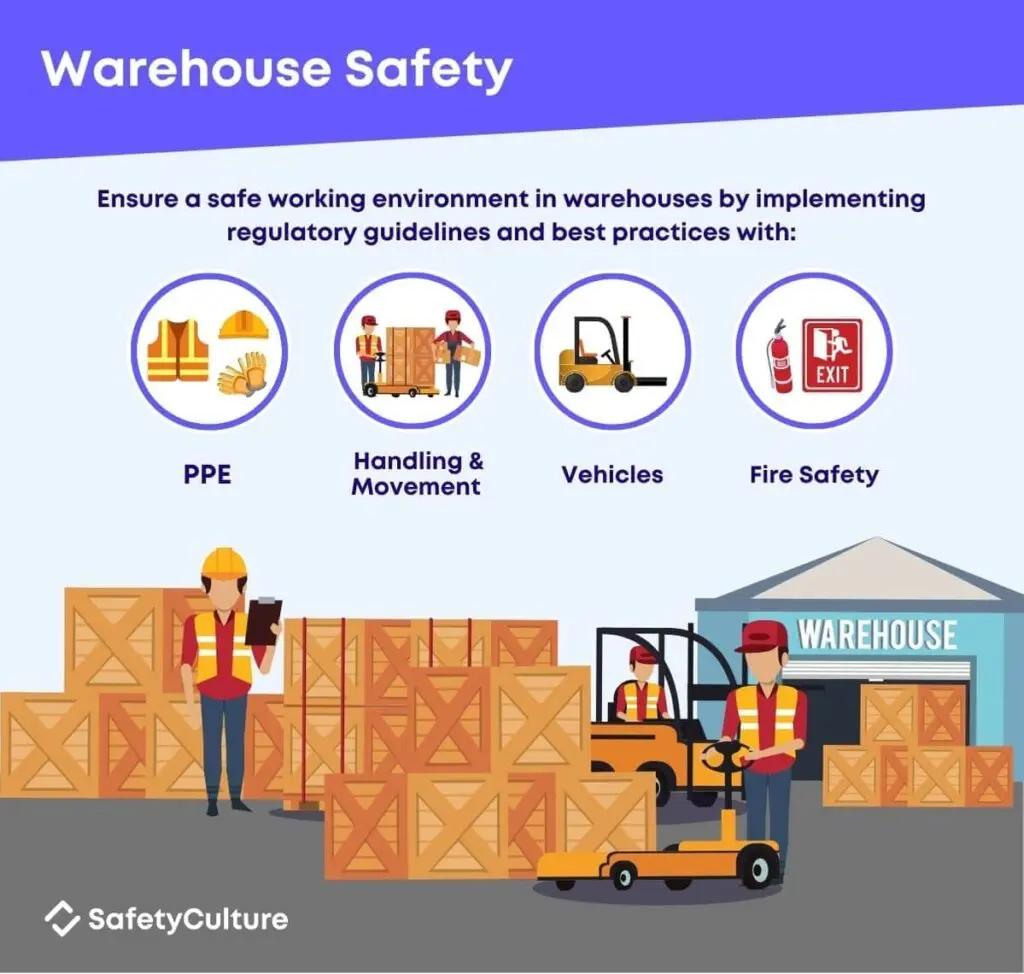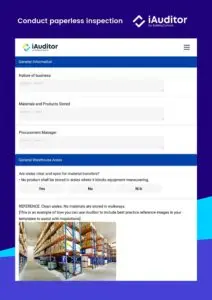What is Warehouse Inventory Management System?
A warehouse inventory management system is an application that helps warehouse managers and business owners efficiently manage responsibilities involved in the storage, tracking, and movement of inventory in warehouses.
What is Warehouse Inventory Management?
Warehouse inventory management is the organized coordination of tasks such as receiving items for inventory, maintaining the quality of stocks while in storage, tracking of stock, packing and shipping out of orders, and replenishing stock upon reaching a minimum number in storage.
Difference Between Warehouse Management and Inventory Management
While both warehouse management and inventory management involves the receipt, storage, packing, and shipping out of stocks, there are some key differences.
| Inventory Management | Warehouse Management |
| Knows which items are in storage and how many are currently in stock | Knows which items are in storage and how many are in stock as well as where the items are located in a warehouse |
| Facility used for storage may or may not be a warehouse | Storage facility can be one or multiple warehouses |
| Ideal for smaller businesses | Utilized by larger businesses with more complex operations |
Common Challenges
The nature of managing a warehouse, its functions, and inventory brings challenges for every warehouse manager. Here are some of the most common challenges in managing warehouse inventory:
Data Inaccuracy
Having the most updated inventory of items in a warehouse is paramount in managing a warehouse. Inaccurate inventory can lead to confusion and failure to meet customer expectations. Inaccurate information can also be problematic when warehouse inventory management involves restocking items upon reaching predetermined minimum numbers. Using systems that automate data updates can help keep records up-to-date without manual intervention.
Lack of Visibility
Managing warehouse inventory involves the need to know if certain items are in stock and where they can be found in a warehouse or among multiple warehouses. Lacking the visibility for stock location will cost time and money for a business where efficiently locating and moving goods is integral to the success of operations. An option to solve lack of visibility is to utilize warehouse inventory management system software that allows tagging of inventory to exact locations.
Warehouse Layout
In order for a warehouse space to be optimized and the storage and moving of stocks to be efficient, the layout of a warehouse must be well thought out. Stocks that are in high demand can be placed where they can be easily moved and replenished. Proper warehouse layout can also contribute to making the warehouse safe as equipment needs enough space to move around and avoid hitting workers, warehouse racks, and other equipment
Manual Handling of Documents
Managing large warehouse inventory using pen and paper can be inefficient and documents that go through multiple personnel have the tendency to get lost. Also, with the new threats brought by the recent pandemic, paperwork that is shared by different people can become a serious health risk. An option to minimize manual handling of documents is to go paperless and utilize what’s readily available—mobile devices that can make use of digital forms.
Emerging Risks
Emerging risks to health and safety need to be taken into account when managing warehouse inventory. Existing processes may not be aligned with the most current industry standards or health protocols that are intended to keep warehouse workers safe from new risks in the workplace. This could lead to disruptions to operations either due to workplace-related health and safety issues or regulatory non-compliance. Take advantage of available resources that can help keep warehouses safer and compliant with regulations.
Tips and Best Practices
Here are some tips and best practices that can help warehouse managers deal with existing and new challenges in managing warehouse inventory.
Conduct Regular Inspections
Conducting regular inspections help proactively catch issues that can lead to costly or dangerous incidents. By observing operations and how things currently work, warehouse managers can be more aware of challenges and come up with actions that can properly address issues. Whether such challenges are warehouse layout or non-compliance with warehouse safety, inspections provide the opportunity to proactively learn about issues and find ways to correct them.
Explore our Free Warehouse Safety Templates
See how digital checklists simplify business processes with just a tap.
View nowAim for Continuous Improvement
By being knowledgeable with what’s happening in the warehouse, warehouse managers can be more aware of what can be further improved. Applying improvement processes can help guide warehouse managers the right steps for continuous improvement.
Improving the warehouse also includes elevating the competency of employees. Continuously improve the competency of employees by providing refresher training and using technology that can help facilitate learning.
Stay Updated with the Latest Technology
There is a lot of new technology that can help better manage the multiple responsibilities of running a warehouse and effectively apply best practices. SafetyCulture (formerly iAuditor) is a mobile application that can help warehouse managers implement best practices in warehouse inventory management in terms of keeping the warehouse safe and running efficiently and automating processes whenever possible.
Warehouses can also utilize sensors to automate maintaining ideal conditions such as temperature and humidity for special items in storage.
How to Manage Warehouse Inventory
Below are some other recommendations that can help improve and manage warehouse inventory:
- Review warehouse layout – Conduct an evaluation of the current warehouse design to see if it’s ideal and at par with what the business wants to achieve in terms of inventory efficiency. The main goal is to ensure that the layout will help reach optimum performance and ease the way employees do their job. Considerations include safety, space, and accessibility.
- Make inventory accessible – In connection with the above item, work on increasing warehouse efficiency by organizing stocks and products to make them easily accessible to relevant personnel. At the same time, determine the storage technique that would best contribute to the goal. Do this by sorting together products based on size, seasonality, demand, or other prominent factors.
- Empower your employees – Aside from the technical aspect, any improvement sought in business processes is best accomplished through the help of the employees themselves. Train them on how to best ensure warehouse safety and create a detailed plan that they can use as guide to do things without much supervision. It will also be ideal to get employees to use new technologies that can reduce inefficient time spent, hastens daily operations, and prevents inaccuracy in order fulfillments.
How Does a Warehouse Inventory Management System Work?
A warehouse inventory management system works by providing features or functionalities that can help warehouse managers better address the challenges of running warehouse inventory. By minimizing disruptions to smooth operations and automating processes whenever possible, warehouse inventory management systems can help make the responsibility of running a warehouse a bit easier for warehouse managers and business owners.
Best Software
A warehouse inventory management system software not only needs to provide the most basic functionalities expected by warehouse managers but also other features that can help make the job easier. With the use of SafetyCulture, managers and business owners will be able to see that existing processes can still be improved and become more efficient through the following:
Real-time Updates
Warehouse inventory constantly needs to stay updated with the most recent numbers and information. SafetyCulture automatically synchronizes updates across all devices to ensure that whenever authorized users access the software, the data they’re seeing is accurate all the time.

Automation and Paperless Processes
Knowing the exact location of specific inventory all the time is crucial in warehouse inventory management. SafetyCulture has geo tagging and other software features that allows location identification that makes it faster and easier to locate inventory. SafetyCulture also has barcode scanning that can be integrated with inventory templates which will help eliminate redundant steps in warehouse inventory management.

Quality and Safety Controls
Managing warehouses is a huge responsibility for warehouse managers, juggling tasks to maintain safety and quality of work and inventory 24 hours a day, 365 days a year. With features such as scheduling and automated reporting, SafetyCulture can help proactively maintain quality and safety in any warehouse. It can also integrate with sensors and other existing platforms you are currently using to maintain seamless operations.

Warehouse Inventory Templates
Here are some sample warehouse inventory templates that you can download for free and use for warehouse inventory management.
Warehouse Safety Inspection Checklist
This warehouse safety inspection checklist can help safety officers and warehouse managers proactively catch potential risks in warehouses. Use this warehouse safety inspection checklist when evaluating warehouse safety, security, and implementation of emergency and safety procedures.
This inventory template can be used for warehouse inventory as well as for the inventory purposes of other industries in retail, manufacturing, construction, etc. SafetyCulture can be integrated with other applications currently being used in a warehouse or a business to ensure a secure and seamless flow of data between systems.
Use SafetyCulture with this racking inspection checklist to identify damaged components of warehouse racks using the traffic light system. For any urgent issues found during inspections, immediately assign corrective actions to address health and safety risks with the use of this checklist on SafetyCulture.
Packaging Quality Control Checklist
This packaging quality control checklist can help warehouse quality control officers to determine if finished product packaging meets quality requirements. Record if the packaged products are within accepted standards, need to be put on hold, or need reworking. Categorize defects as critical, major, or minor to solve quality issues with the appropriate course of action.






